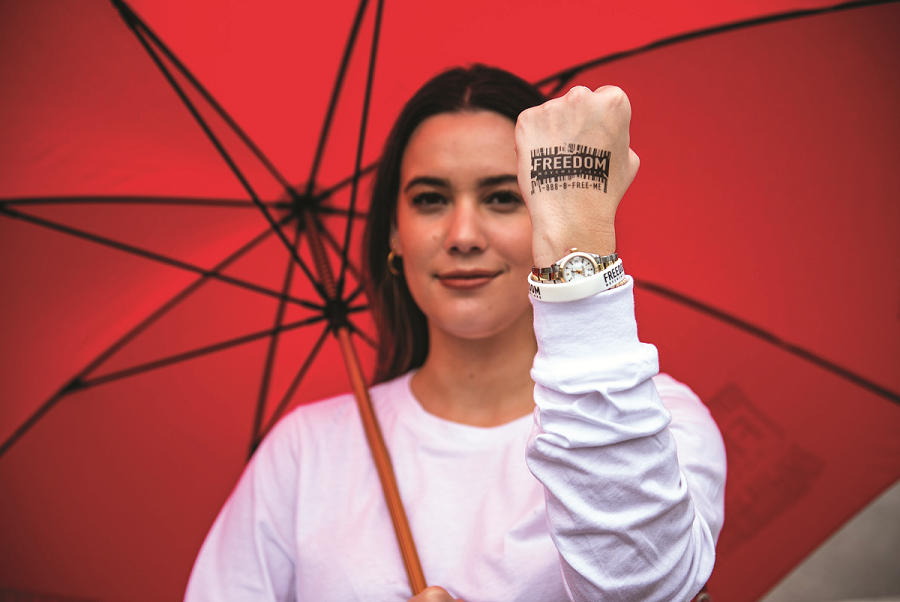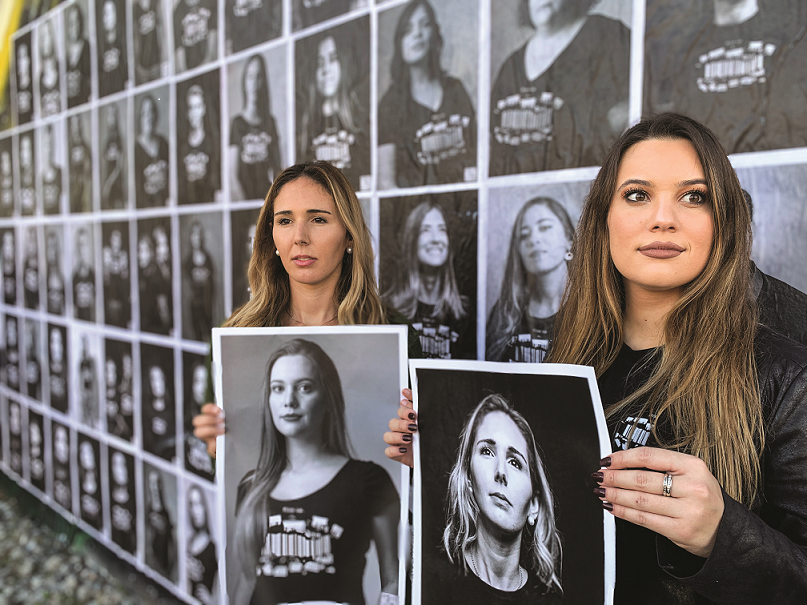Students Combat Human Trafficking
Future physicians and other volunteers got the message out during Super Bowl week
By Kai Hill, Robert C. Jones, Jr. and Christine Morris
Photographs by Robert C. Jones, Jr. and David Sutta Photography
Photographs by Robert C. Jones, Jr. and David Sutta Photography

Miller School of Medicine students assumed a leading role in preventing human trafficking in Miami-Dade County before and during this year’s Super Bowl weekend. Among their activities, which ranged from educating health care providers to securing public service announcements, the students debuted a temporary tattoo of a broken barcode.
“Historically, many traffickers will brand their victims with a tattooed barcode as a sign of property,” said second-year M.D. student Isabella M. Ferré, M.P.H. ’18, who led the effort alongside fellow student activists, University of Miami Health System providers, law enforcement and community partners to spread awareness of the plight of victims and increased activities associated with high-profile tourism events such as the Super Bowl.
The students designed the tattoo to symbolize that no person is for sale. The tattoo also contained the national trafficking hotline number, making this campaign not only about spreading awareness but providing a lifeline for those who might need the number, said Ferré. UM medical students and a local documentary producer also promoted the broken barcode emblem at Super Bowl-related events and high tourism areas.
“Barcodes are one of the major types of branding marks by traffickers,” said Jazlyn Merida, M.P.H., second-year UM medical student. “Many of these barcode tattoos will scan with a smartphone, placing a monetary value on that individual. This is only one type of branding variation, and it is a psychological methodology to force an individual to relinquish his or her free will.”
Posters for the ER
The students also produced awareness posters for physicians and other medical staff in emergency rooms.
“There has been an increase in trafficking in whatever city hosts the Super Bowl,” said Brett Colbert, a second-year M.D./Ph.D. student. “We went about figuring out how to make a difference. As physicians and health care professionals, we are uniquely positioned to do something.”
Research has shown that two-thirds of trafficking victims come in contact with a physician or other medical professional in an emergency room or clinic. One of the challenges is that many physicians are not experienced in identifying these victims and making sure they receive the help they need. If they can learn to recognize the signs of human trafficking understand how to interact with a survivor, and be confident in providing next steps, they can have a significant impact.
A Wall of Victims
The prior Saturday, about 60 people helped hang human trafficking awareness posters along a lengthy wall in Miami’s Wynwood section. The 70 different versions of the posters depict people of all ethnic groups and races wearing black T-shirts with the broken barcode on the front. Some of the people on the posters are human trafficking survivors. Some are medical students. Others are Miami-Dade residents.
“But you would never know who was who just by looking at them,” Ferré said.
“And that’s our point,” Merida added. “You would think it’s somebody you’d never see on the street or somebody you wouldn’t know. But there’s really no stereotypical human trafficking victim. It could have been any one of us in a different place, a different time, and that’s why it’s important to raise human awareness.”



